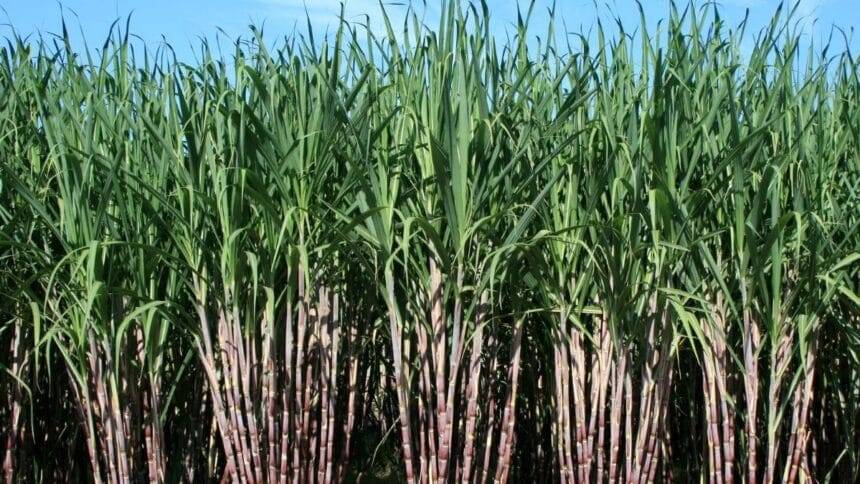Main Points In Hindi (मुख्य बातें – हिंदी में)
-
फसल की पैदावार में कमी: शुगरकेन की फसल में टॉप बोरर और मीली बग की हमले के कारण पैदावार में 15 से 20 प्रतिशत की कमी का अनुमान है। इस साल किसानों को प्रति हेक्टेयर औसतन 80 टन की बजाय 60 से 65 टन उत्पादन प्राप्त हो रहा है।
-
जलवायु परिवर्तन का प्रभाव: टॉप बोरर की सक्रियता सामान्यतः जुलाई तक रहती है, लेकिन इस वर्ष यह सितंबर तक सक्रिय रहा। जलवायु परिवर्तन और तापमान में बदलाव के कारण कीटों का आक्रमण बढ़ गया है।
-
किसानों की आय पर असर: फसल यील्ड में गिरावट के चलते किसानों की आय में कमी आ सकती है, जिससे शुगर मिलों के लिए चीनी उत्पादन लक्ष्य पूरा करना चुनौतीपूर्ण हो सकता है।
-
टॉप बोरर और मीली बग का नुकसान: टॉप बोरर पौधों की छाल में सुराख बना कर अंदर प्रवेश करता है, जिससे पौधे कमजोर हो जाते हैं। मीली बग पौधों के रस को चूसने के कारण उनकी वृद्धि पर नकारात्मक प्रभाव डालता है और फसल की गुणवत्ता को भी प्रभावित करता है।
- उत्पादन लागत में वृद्धि: पेस्टिसाइड्स के छिड़काव के बावजूद कीटों के हमले में वृद्धि हुई है, जिससे किसानों को अधिक खर्च करना पड़ रहा है। यह स्थितियाँ उनके लिए धन की हानि और उत्पादन में गिरावट का कारण बन रही हैं।
Main Points In English(मुख्य बातें – अंग्रेज़ी में)
-
Yield Decline: The sugarcane crop is expected to experience a yield decline of 15 to 20 percent due to attacks from pests such as the top borer and mealy bug. This reduction brings average yields down from 80 tonnes to approximately 60-65 tonnes per hectare.
-
Extended Pest Activity: The top borer insect, typically active until July, continued to cause damage until September this year, a trend linked to climate change and temperature variations. Additionally, mealy bug attacks have persisted until October, exacerbating the situation for farmers.
-
Increased Production Costs: Farmers are incurring higher production costs due to the need for increased pesticide applications to combat the pests. Despite these efforts, the farmers are still facing poor yield outcomes and lower crop quality.
-
Economic Impact: The reduced sugarcane yield is likely to negatively affect farmers’ incomes and may hinder sugar mills from meeting production targets, raising concerns about the overall sugar supply chain.
- Damage Mechanisms: The top borer and mealy bug pests significantly harm the sugarcane crop. The top borer damages the plant’s structure, preventing proper growth, while the mealy bug weakens plants by sucking sap, leading to yellowing leaves and overall reduced quality and quantity of the crop.
Complete News In Hindi(पूरी खबर – हिंदी में)


चीनीगन्ना फसल में टॉप बोरर और मिली बग कीटों के हमले के कारण पैदावार में 15 से 20 प्रतिशत की कमी आ सकती है। यह जानकारी राहुल त्यागी, जनरल मैनेजर, चीनी गन्ना विकास, मोदी शुगर मिल, मोदी नगर (गाज़ियाबाद) ने दी। उन्होंने बताया कि इस साल टॉप बोरर कीट का हमला सितंबर तक जारी रहा, जबकि सामान्यतः यह कीट जुलाई तक ही सक्रिय रहता है। जलवायु परिवर्तन और तापमान में बदलाव की वजह से टॉप बोरर और मिली बग कीटों ने इस साल सितंबर तक चीनीगन्ना फसल को काफी नुकसान पहुँचाया है। इससे किसानों की औसत पैदावार, जो पहले 80 टन प्रति हेक्टेयर होती थी, अब 60 से 65 टन प्रति हेक्टेयर तक सीमित हो गई है।
इससे किसानों की आय में कमी आने की उम्मीद है और चीनी मिलों के लिए चीनी उत्पादन लक्ष्य को हासिल करना मुश्किल हो सकता है। राहुल त्यागी ने बताया कि इस साल मिली बग के हमलों में भी बढ़ोतरी हुई है। यह कीट रस चुसने वाला है जो चीनीगन्ना की वृद्धि और चीनी उत्पादन पर नकारात्मक प्रभाव डालता है। यह कीट अक्टूबर तक सक्रिय रहा, जिससे किसानों और चीनी मिलों की चिंता बढ़ गई है।
इसके अलावा पढ़ें: पराली जलाना, दीवाली और किसान ‘खलनायक’ क्यों बन रहे हैं…दिल्ली की प्रदूषण की समस्या अपनी ‘कृषि’ है
टॉप बोरर कीट कैसे नुकसान पहुंचाता है?
कृषि scientists के अनुसार, टॉप बोरर कीट, जिसे स्थानीय भाषा में कंसुवा या कंफरहा कहा जाता है, चीनीगन्ना crop के लिए सबसे नुकसानदायक कीटों में से एक माना जाता है। यह कीट चीनीगन्ना के पौधों के ऊपरी भाग में छेद करके तने में प्रवेश करता है और सुरंगों के माध्यम से अंदर बढ़ता है। इससे चीनीगन्ना की कलियां छोटी और कमजोर हो जाती हैं, जिससे फसल पूरी तरह से विकसित नहीं हो पाती। यदि इस कीट पर समय पर नियंत्रण नहीं किया गया, तो यह पूरी फसल को नष्ट कर सकता है और किसानों को भारी नुकसान हो सकता है। टॉप बोरर कीट का जीवन चक्र साल में 4 से 5 बार पूरा होता है और इसका प्रकोप फरवरी से अक्टूबर तक जारी रहता है।
मिली बग का हमला
मिली बग भी चीनीगन्ना फसल के लिए एक बड़ा खतरा है। यह कीट चीनीगन्ना के पौधों की पत्तियों और तनों से रस चूसता है, जिससे पौधों की ताकत कम हो जाती है और उनकी वृद्धि रुक जाती है। मिली बग के हमले से चीनीगन्ना की पत्तियों का पीला पड़ना और पौधों पर सोटी मोल्ड का विकास होता है, जो फसल की गुणवत्ता और उत्पादन को प्रभावित करता है। इसके अलावा, मिली बग जड़ों को भी नुकसान पहुँचाता है, जिससे चीनीगन्ना बौना और पतला हो जाता है। मिली बग का सबसे अधिक हमला महाराष्ट्र, कर्नाटका और उत्तर प्रदेश जैसे चीनीगन्ना उगाने वाले राज्यों में देखा गया है।
उत्पादन लागत बढ़ी
हालांकि, किसान कीटों के हमलों से बचने के लिए कीटनाशकों का छिड़काव कर रहे हैं, फिर भी इस साल कीटों का हमला बहुत बढ़ गया है और किसानों को अपेक्षित परिणाम नहीं मिल रहे हैं। इससे न केवल उनकी पैदावार में कमी आई है, बल्कि उत्पादन लागत भी बढ़ गई है, क्योंकि किसानों को कीटनाशकों पर अधिक खर्च करना पड़ा है। इसके बावजूद, किसानों को पैदावार में कमी और गुणवत्ता में गिरावट के कारण नुकसान का सामना करना पड़ रहा है।
यह भी पढ़ें: हरियाणा ने देश में धान की खरीद के सबसे अधिक लक्ष्य को हासिल किया, इसके पीछे क्या कारण हैं?
Complete News In English(पूरी खबर – अंग्रेज़ी में)
Due to the attack of top borer and mealy bug pests in the sugarcane crop, the yield may decline by 15 to 20 percent. This information has been given by Rahul Tyagi, General Manager, Sugarcane Development, Modi Sugar Mill, Modi Nagar (Ghaziabad). He told that this year the attack of top borer insect in sugarcane crop continued till the month of September, whereas normally this insect remains more active till the month of July only. Due to climate change and change in temperature, this year top borer and mealy bug pests caused huge damage to the sugarcane crop till September. As a result, farmers who earlier used to get an average yield of 80 tonnes of sugarcane per hectare, this time their crop has been limited to 60 to 65 tonnes per hectare.
Due to this, there is an expected decline in the income of the farmers and it may be difficult for the sugar mills to meet the sugar production targets. Rahul Tyagi said that this year there has also been an increase in mealy bug attacks. Mealy bug is a juice sucking insect, which adversely affects the growth of sugarcane and sugar production. This insect was active on the sugarcane crop till October. Due to this, the concern of farmers and sugar mills has increased.
Also read: Stop making stubble, Diwali and farmers ‘villains’…Pollution is Delhi’s own ‘farming’
How does the top borer insect cause harm?
According to agricultural scientists, Top Borer insect, which is called Kansuva or Kanfrarha in the local language, is considered one of the most harmful pests for the sugarcane crop. This insect enters the stem by making holes in the upper part of the sugarcane plants and reaches inside through tunnels. As a result, the sugarcane buds become small and weak, due to which the sugarcane is not able to develop completely. If this pest is not controlled on time, it can destroy the entire crop and farmers may suffer huge losses. The life cycle of the top borer insect is completed 4 to 5 times in a year and its outbreak continues from February to October.
mili bugkit attack
Millipede is also a big threat to the sugarcane crop. This insect sucks the juice from the leaves and stems of sugarcane plants, due to which the plants become weak and their growth stops. Mealy bug attack can cause yellowing of sugarcane leaves and the growth of sooty mold on the plants, affecting the quality and production of the crop. Apart from this, mealy bug also damages the roots, due to which the sugarcane becomes dwarf and thin. The highest incidence of mealy bug has been seen in sugarcane growing states like Maharashtra, Karnataka and Uttar Pradesh.
production costs increased
Although, farmers are spraying pesticides to avoid the attack of pests, yet this year the attack of pests has increased a lot and farmers are not getting the expected results. This has not only led to a decline in their yields, but also increased the cost of production, as farmers have had to spend more on pesticides. Despite this, farmers are facing losses due to reduction in yield and deterioration in quality.
Read this also: Haryana has achieved the highest target of paddy procurement in the country, what are the reasons behind the success?




